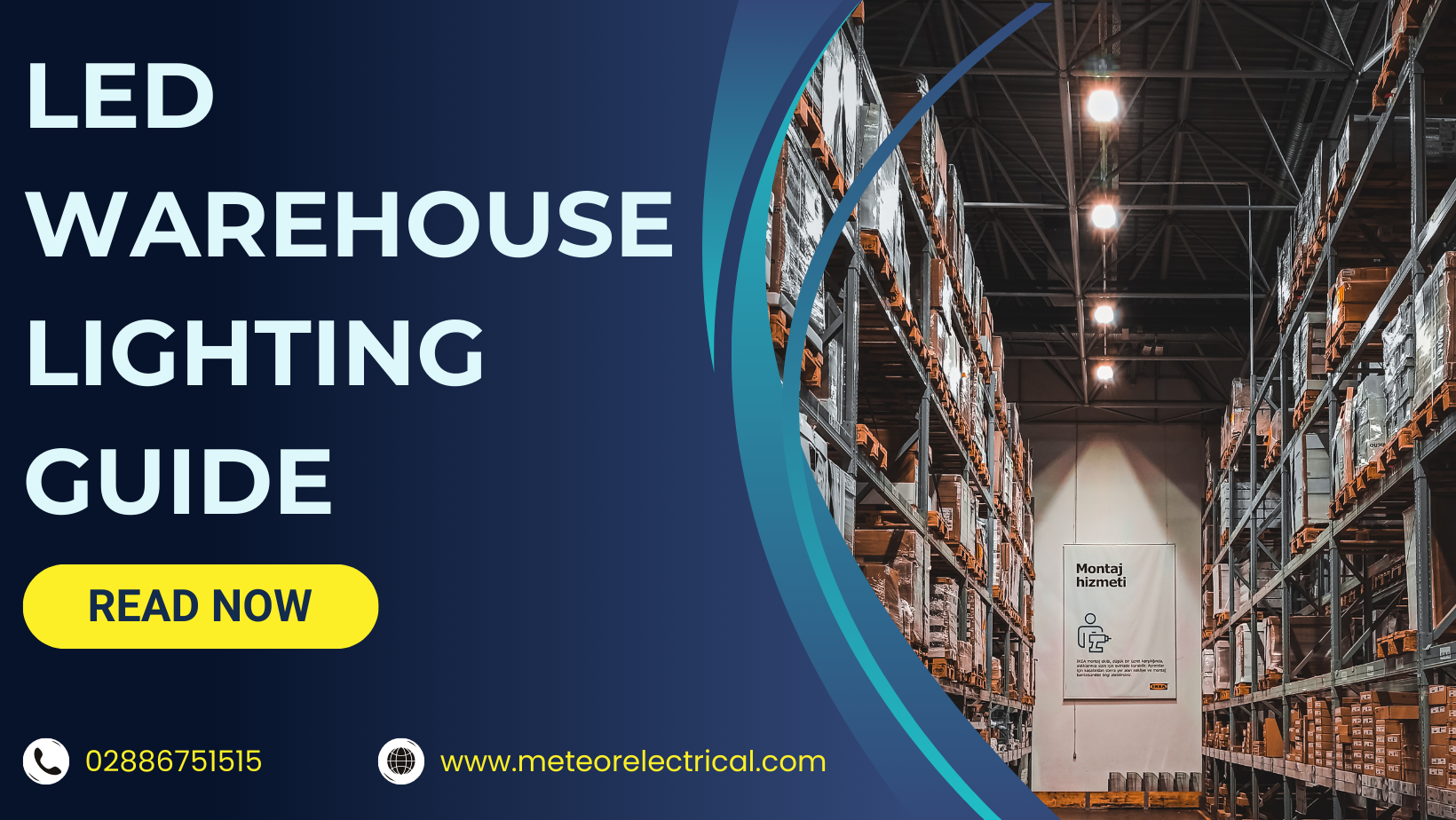LED Warehouse Lighting
Good warehouse lighting is essential as it promotes safe operations and efficient management. A well-lit warehouse can even increase productivity. Since warehouse lighting and workshop lights remain operational for a long period of time, many warehouse owners are switching to energy efficient solutions, such as LED warehouse lighting.
LED warehouse lighting uses energy more efficiently while providing high-intensity illumination perfect for the warehouse environment. There are several other benefits associated with this energy efficient luminaries. Here is everything you need to know about LED warehouse lighting.
What Are Energy Efficient Lights?
Before looking at LED warehouse lighting, it is important to understand what are energy efficient lights and how they work. This will help consumers make the best use of their energy efficient luminaries.
Energy efficient lighting is the modern way of illuminating spaces without worrying about energy costs. These lights reduce the energy usage of the light model without affecting the final lumen output or brightness.
An energy efficient light fixture consumes less energy to perform the same function as a standard light. These qualities are at the core of energy efficient lighting. It is important to understand that energy consumption does not correlate to the quality of brightness.
While most traditional light bulbs use wattage to determine their quality, these innovative lamps focus on the light output instead. Therefore, if you are looking for high-quality energy efficiency, consider the lumen output instead of the wattage.
Energy saving lights can help you save electricity while providing high-quality illumination. There are several ways to implement energy efficient luminaries. Energy efficient lighting also has better structural integrity than other lighting. These luminaries have better circuitry than conventional lights as it stops electricity wastage.
A common component in some energy efficiency lights is a dimmer switch. This switch provides even more efficient use of your energy. You can also use a dimmer solution for LED warehouse lighting. Since warehouses are quite large, it is possible that not all areas will remain occupied throughout the day. You can dim unoccupied areas with dimmer LED warehouse lighting to save on energy costs.

Large-scale Shift Towards Energy Efficient Lighting
Consumers are switching to energy efficient lighting in their households, but there is also change happening on a larger scale.
Many governments and legislations are urging people to switch to energy-efficient light products instead of their traditional counterparts. One reason for this shift is increasing knowledge of inefficient lighting and its impact on the environment.
Traditional light bulbs are harmful to the environment as they are not sustainable and cannot be recycled. The bulbs also sometimes contain toxic gasses that can do significant damage to the environment. The strain on power grids from traditional lighting is also a major concern, especially due to increasing energy cap prices.
Lighting is a basic requirement of any building, whether residential or commercial. Lighting is a major part of our daily life and impacts our day-to-day activities. Since lighting is so important, it also consumes a significant portion of energy.
Such high energy consumption levels are not sustainable, and you will experience higher energy costs in the future. To combat such issues, energy efficient lighting is crucial. Industries' energy consumption accounts for 26% of Europe’s total energy usage. A major part of this energy goes towards lighting.
Warehouse lighting tends to be strong and, therefore, a bigger strain on the power grid. These locations also constantly use light energy, which leads to higher energy bills. Due to these factors, lighting is an important area where energy must be conserved. LED warehouse lighting provides a major solution to these concerns.
There have been major changes to drive forward the use of energy efficient lighting in terms of wider application. Several government legislatures are urging manufacturers to scale back on the production of inefficient lighting. This change is happening worldwide, and even the UK plans to phase out all inefficient lighting by 2023.
One way governments are implementing these strategies is by involving manufacturers. These governments are also incentivising manufacturers to produce more efficient light solutions. The awareness of energy efficient lighting is also increasing, and many people are seeking out energy efficient bulbs instead of their traditional counterparts.
Due to this high demand, you can expect the energy efficient light industry to reach £324 billion by 2027. With high demand, there will be many more economical and efficient light products to choose from in the future.
With the rise of climate change awareness, consumers are also seeking environmentally-friendly and sustainable lighting products. Energy efficient lighting such as LEDs is highly efficient and also sustainable.
As mentioned before, these lights do not contain any harmful chemicals that would make it difficult to dispose of them. Traditional light bulbs contain trace amounts of mercury which is highly toxic when released.
Even broken shards of incandescent light bulbs can lead to mercury build-up in groundwater. Energy efficient LEDs can also be recycled easily, unlike other traditional bulbs. These lights do not produce blue waves, which hinders productivity.
Since productivity is a major concern in warehouses, it is important to use efficient light sources such as LED warehouse lighting.
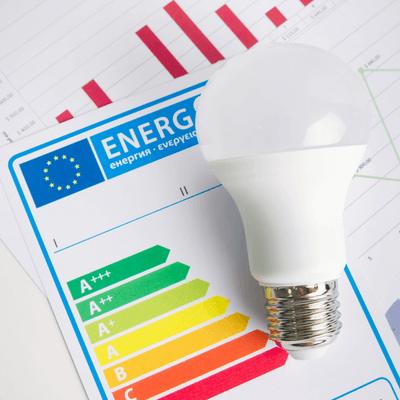
What Is The Most Efficient Warehouse Lighting?
If you are looking for highly efficient luminaries to keep a warehouse well-lit but low on energy costs, LED warehouse lighting is the best option.
LED lighting, in general, is a great option when it comes to luminaries as they provide high-quality brightness without wasting any energy. Most warehouses use either linear fluorescent or metal halide lamps.
While these lamps are a much better choice than incandescent light, they are still not efficient enough. Fluorescent lamps do not have a long lifespan which means you will have to replace your lamps constantly.
Metal-halide lamps contain mercury vapor which can be highly toxic if not disposed of properly. Due to these reasons, LED warehouse lighting is the best choice for illuminating these large spaces.
Energy Efficient LED Lights
After fluorescents lamps, manufacturers designed an even more efficient light model. These were called light emitting diodes or LED light bulbs. In most cases, LED lights have replaced linear fluorescents as the more energy efficient light model out of the two when it comes to warehouse lighting.
When it comes to energy efficient lighting, many people prefer using LEDs instead of another lighting. Energy saving LED light bulbs are used for both domestic and commercial applications. These bulbs come in a linear lamp style or strip light format, commonly used in the workplace and industrial settings.
LEDs lamps tend to be more efficient than other lamps due to their structural component. In most lightbulbs, an efficient circuitry is crucial to ensure their efficiency, and an LED bulb is no different. Based on their physical makeup, LED lights are far more efficient than other light bulbs, especially incandescent lights.
LED light has a robust light bulb structure that is highly energy-efficient. When these LED bulbs were first created, they were produced with a single-bulb structure. Earlier versions of LED light bulbs were mainly used in smaller applications such as electronics, instrument panels, pen lights, and more.
Once these lights were produced in small grouped clusters, they had a wider appeal in terms of applications. More recent use of energy efficient LED light bulbs includes indoor headlamps, string lighting, and recessed lights.
In public spaces, LEDs lights are commonly used in street lamps, parking garage lighting, and walkway lighting. For industrial purposes, manufacturers have created specialised LED lighting that produces high-intensity brightness while retaining its efficient qualities.
With the rising popularity of energy efficient lighting, LED bulbs are becoming one of the most popular light sources worldwide. For domestic and household purposes, LED lights come equipped with a standard base fixture similar to other bulbs. Another great feature of LEDs is the lens. The diffuser lens is a crucial component as it helps the light spread in a wider beam.
One of the major features of early LED light bulbs is that the light emission is directional as opposed to traditional incandescent bulbs, which spread light in a spherical direction. This type of lighting direction works well with recessed lighting or under cabinet lighting fixtures; however, directional lighting may not be suitable for table lamps.
Modern LED light bulbs are created to address directional light limitations. These newer LED lights use a diffuser lens and a reflector to distribute illumination in multiple directions, similar to an incandescent light bulb. LEDs lights are constantly going through innovations; therefore, these lights are a great investment for any kind of application, including LED warehouse lighting.
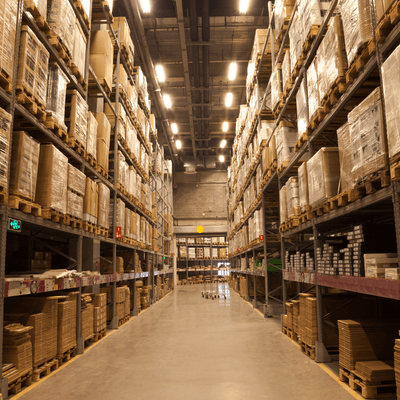
How Much Power Do LEDs Lamps Consume?
LED lamps are considered one of the best light products on the market but just how efficient are they? To examine the efficiency of LED lights, you must look at the lumen output instead of the wattage.
Since these lights do not rely on wattage to deliver superior performance, the lumen output is the best way to measure their quality. LED lights are highly efficient because they do not waste energy.
Most LED lamps use 90% less energy than an incandescent or halogen light bulb of similar brightness. For example, a 10-watt LED light bulb can achieve a similar lumen output comparable with a 100-watt incandescent light bulb.
This is because LED bulbs are much more efficient at converting electricity into light energy. The large difference in wattage shows just how efficient LEDs are when compared to incandescent.
The structural component of LEDs makes a key difference in this conversion because, in other light models, most of the energy would get wasted as a heat emission. However, LED lights do not produce heat; therefore, they make much better use of the energy consumed.
Another great benefit of using LED light bulbs is the longer lifespan. Since there is no thermal emission, the LED bulb does not suffer any damage and therefore does not need constant replacements.
A well-built LED light bulb can last 25 times longer than any other light bulb. When it comes to warehouse lighting, LEDs still perform better than fluorescent light bulbs. Average LED warehouse lights tend to last for over 50,000 hours, and they only lose 30 percent of their total light output after 10 years.
There are some economical versions of LED warehouse lighting that have a lower lifespan, but even these perform better in the long term in comparison to fluorescent lamps. Most fluorescent lamps for warehouses only have a lifespan of 15,000 hours. When it comes to long-term usage, LEDs also perform much better than fluorescent lamps.
Some fluorescent lamps experience colour degradation and fading over prolonged use. This quality can be detrimental to the warehouse work environment. LEDs, however, tend to perform much better in this department; therefore, consumers must switch to LED warehouse lighting.
Why Is Good Lighting Important For Warehouses?
If you want a warehouse to keep operating smoothly, you must look for efficient lighting solutions that provide good illumination. These types of lights ensure the safety of warehouse employees and improve productivity.
Improper lighting can lead to various hazards and drastically decline the work quality of the warehouse. Warehouses are also usually deprived of natural light; therefore, it is important to put in fixtures that will provide adequate illumination.
Apart from safety, here are some reasons why you should opt for proper warehouse lighting
- Reduce Employee Mistakes: with good lightings, such as LED warehouse lighting, you can get rid of dimly lit spots in the area. These include places where employees might strain their eyesight to see paperwork and labels. When employees see better, they make fewer mistakes.
- Reduce Employee Fatigue: if your warehouse has proper illumination levels, your employees are less likely to feel lethargic during midday hours. Proper lighting ensures that warehouse workers remain alert and productive. It is important to ensure the lighting produces the correct colour temperature and brightness level to achieve this level of productivity.
- Improve Visibility Levels: most warehouses also have high shelves and narrow corridors. Therefore, you must look for light fixtures that provide better visibility. To achieve improved visibility, you must look for LED warehouse lighting with a narrow light beam angle. This will light up important areas and improve the work experience.
- Eliminate Heavy Machinery Accidents: Heavy machinery is commonly found in most warehouses which is why it is important to have proper illumination to reduce accidents. Without proper lighting, heavy machine operators can not see what they are doing and run into shelves or, even worse, injure someone. Effective lighting helps operators use machinery without damaging property and fellow employees.
- Keep Energy Cost Low: LED warehouse lighting is one of the most efficient types of lighting on the market. These do not waste energy compared to incandescent lamps. LED lighting is also much more efficient than fluorescent lamps, so you can keep your energy costs low without interrupting your light use. LED warehouse lighting is also cool to the touch and does not produce heat energy, unlike traditional luminaries. This heat energy can become an even bigger strain on your energy bills; therefore, a switch to LEDs is much more cost-effective for warehouse purposes.

Why Do You Need LED Warehouse Lighting?
As mentioned before, a typical warehouse uses two types of lighting: linear fluorescent lamps or metal halide luminaries.
Even though fluorescent and halide lamps are much better than incandescent bulbs, they still come with a lot of issues, such as disposal hazards, less efficiency, and shorter lifespans.
In comparison, LED lamps are a much better choice for warehouse lighting. If you are still unsure about switching to LED warehouse lighting, here are some benefits you enjoy with these luminaries.
LED Warehouse Lighting Eliminates Warm-Up Times
Metal halide lamps take up a long time to warm up, and some models can take over 15 minutes to reach their full brightness capacity.
In warehouse settings, most people turn on the lights well before opening hours to ensure the halide lamps are already running when work starts. This means that the lamps are burning energy even before they provide any illumination.
Due to this reason, you end up wasting a lot of energy and spending more on energy bills. To avoid such issues, you must switch to LED warehouse lighting, as these lamps do not need any warm-up time to become fully operational.
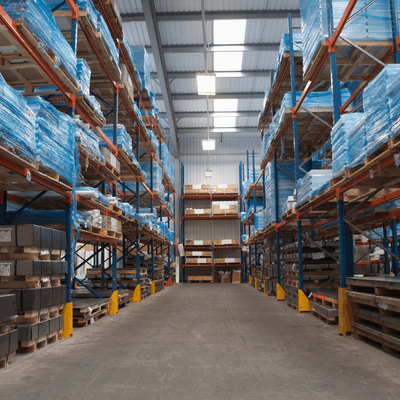
Dimming Ability For Better Efficiency
LED lighting needs LED-specific hardware to perform dimming functions. You can easily find this hardware on the market to add significant value to your warehouse’s overall lighting design. These dimmer controls are easy to install, so you can start using them immediately.
LED lamps are more efficient in running when they operate at less than full power, unlike metal halide bulbs. Additionally, the lifespan of the LED bulb increases when it is run at less than full power. This allows warehouse managers to save even more on energy costs by managing lights in an efficient manner.
Most LED warehouse lighting can work with a dimmer to improve its efficiency. You can also use these lights in conjunction with timers and motion sensors to adapt to foot traffic patterns and ambient conditions. These features make LED warehouse lighting adaptive lighting and are a great way to generate savings at a warehouse facility.
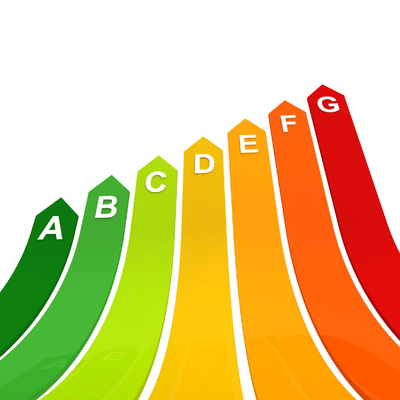
LED lights Can Frequently Switch
Some warehouse lighting can not be switched on and off frequently. This problem is commonly found in metal halide lamps that are inconvenient to turn off. Alternatively, if these lamps are turned off, you spend a lot of time trying to get them back to their full illumination.
Once a metal halide lamp is turned off, it takes around 15 to 20 minutes for it to reach its full brightness. This warm-up time is inconvenient for multiple reasons. Firstly, even though the light hasn’t reached its full brightness, you are still wasting energy and therefore driving up your energy costs.
Any warehouse areas where there is a lull in activity for a significant portion of time will also run the risk of wasting energy as it will be too much of a hassle to turn the metal halide lamps on/off.
In comparison, LED warehouse lighting can be turned on/off instantly without affecting the light output in any way. This means that your LED lamp’s lifespan and energy are not wasted by running them unnecessarily.
What Are The Different Types Of LED Warehouse Lighting?
There are multiple options for LED lighting design when it comes to warehouse spaces. However, there are three types of lighting that work best at illuminating these areas. These lights often come in non-standard configurations, such as directional and round. Here are the three common types of LED warehouse lighting.
LED High Bay Lighting
LED high bay lights are specially designed for industrial applications. These lights are created to illuminate large areas with high ceilings, such as a warehouse. Due to these structural qualities, LED high bay lights are perfect for illuminating a large warehouse space.
The high bay LED lights create a powerful illumination with a long-range beam to improve the focus and visibility. These lamps perform much better than other traditional options, such as fluorescent and halide lamps.
LED high bay lights are also a great investment because they have an extremely long lifespan and improved energy efficiency.
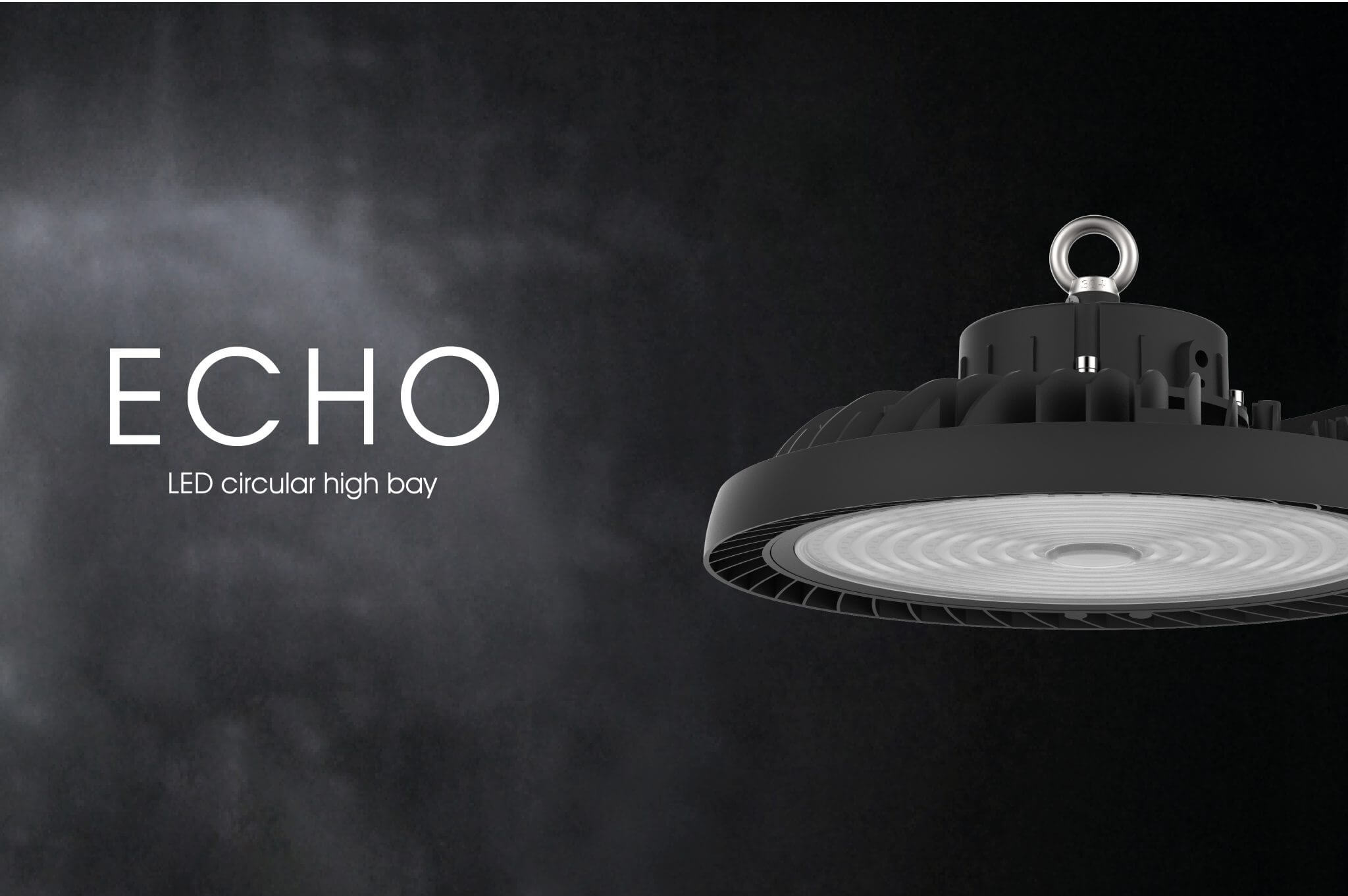
Round High Bay LEDs
These LED lamps have all the benefits of a high bay light, but the round configuration makes them better for providing focused lighting. These types of lights work best in corridors and other walkways in a warehouse setting where you would need high-intensity directional illumination.
LED Directional Channel Retrofit
If you want LED warehouse lighting that emits light from every angle, the directional channel retrofit is the best option. These luminaries are the most useful when they are installed on upper sections of walls or ceilings to emit lights both at an angle and in direction.
What To Look For When Purchasing LED Warehouse Lighting?
Energy saving LED light bulbs come in a variety of different styles and models. Since there is such a wide variety of choices, it is difficult to know which LED energy saving light bulb works best for you.
Not all warehouses come in the same size, and each location has its own lighting needs. Therefore, if high bays work for one warehouse, they might not work for another. Here are some important things to consider when looking for LED warehouse lighting.
Level Of Desired Brightness
One of the most important deciding factors when purchasing a light bulb is the level of brightness. Not every single LED warehouse lighting has the same level of brightness.
Each warehouse differs in its structure, architecture, and operation; therefore, you must consider how much lighting you need before making a purchase. Too much unnecessary lighting can significantly drive up your energy costs, so make sure only to get the amount of lighting you require.
To get a better understanding of the illumination, look at the lumen output instead of the wattage. Since most LEDs have a lower wattage consumption than traditional lamps, the best way to identify their brightness level is through the lumen output.
Please note that these are estimates and should only be used as a guide. Due to the unknown condition of pre-existing fittings, Meteor cannot guarantee that products will have exact like-for-like lumen output.
|
|
LED bulb |
Incandescent bulb |
Fluorescent bulb |
|
Life Expectancy |
50,000/100,000 hours |
1,200 hours |
10,000 hours |
|
Wattage |
8 watts |
60 watts |
14 watts |
|
Lumen Output |
800 |
800 |
800 |
|
Bulbs needed for 25,000 hours use |
1 bulb |
21 bulbs |
3 bulbs |
Choose The Best Lighting Style
As mentioned before, LED lighting comes in a variety of styles, such as regular high and round high bay. Each of these styles comes with its own set of benefits. Identify the type of lighting you need before making a purchase.
For example, your warehouse might work well with only standard high bay LED fixtures. Alternatively, you might want to put a combination of standard high bays and round high bays around your warehouse to meet various illumination purposes.
Plan your lighting design beforehand to help you make the best purchase.
Choose Between Cool And Warm Light
Decide whether you want an LED lamp with cool lighting or an LED with warm lighting. Such like regular bulbs, LED warehouse lighting comes in a variety of different light shades. Cool white light works best for task lighting purposes.
Whereas warm lighting is commonly used for accents and atmosphere. Warm lighting also works well in any office space in a warehouse. If you want more focused lighting to improve productivity, your best option is a cool white LED warehouse lamp.
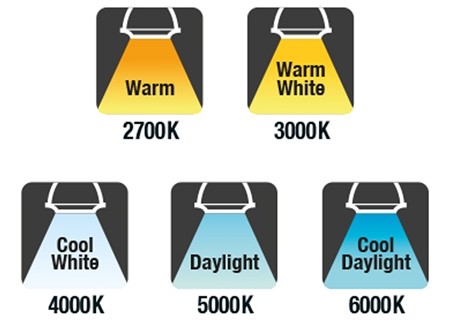
Additional Dimmer Function
Not all warehouse lighting comes with a dimmable option, but the models that do contain this quality can further help you use your energy efficiently.
Dimmable LED warehouse lighting is a great way to conserve light energy in areas that are not used frequently. These lights often work alongside a motion sensor which automatically turns the lighting on to full capacity when it detects movement.
Is LED Warehouse Lighting Safe?
Since warehouses are busy working areas employing a large number of people, safety is a major concern for many warehouse owners. LED warehouse lighting is safe to operate, and these luminaries also promote a safer working environment.
With these lights, you can eliminate problems such as light flickering and fluctuating brightness levels. Such issues can cause eye strain, headaches, and general discomfort. Poor lighting leads to poor employee health and a decline in productivity. However, with LED lighting, you will not have to worry about such issues.
In addition, warehouses generally have vast spaces, tall shelving structures, and deep aisles that can be hard to illuminate properly. Some of these areas leave unlit corners and edges, which can lead to accidents and errors. LED warehouse lighting provides bright, uniform illumination that spreads to every corner within a wirehouse, reducing any brightness gaps and lighting up all spaces consistently.
LED warehouse lighting also does not produce any heat energy, which can drastically heat up warehouse environments. Therefore, LED lamps are the best option for improving the work environment in a warehouse setting.
Final Takeaway
Warehouses need proper lighting to ensure the safety of employees and to increase productivity. LED warehouse lighting is a great option for illuminating such spaces. These lights are also better at using energy efficiently, so you don’t have to worry about high energy costs.
Do you need guidance on choosing the correct industrial lighting for your next project? You're in luck! We have a guide on LED Industrial Lighting for Industrial Environments.

